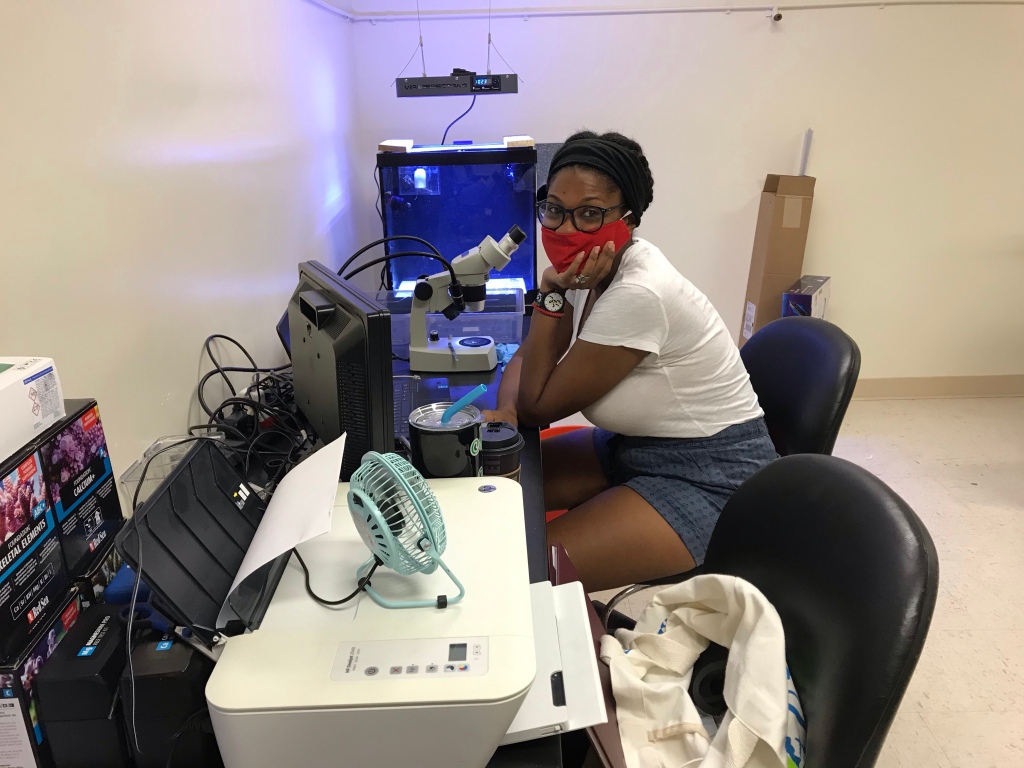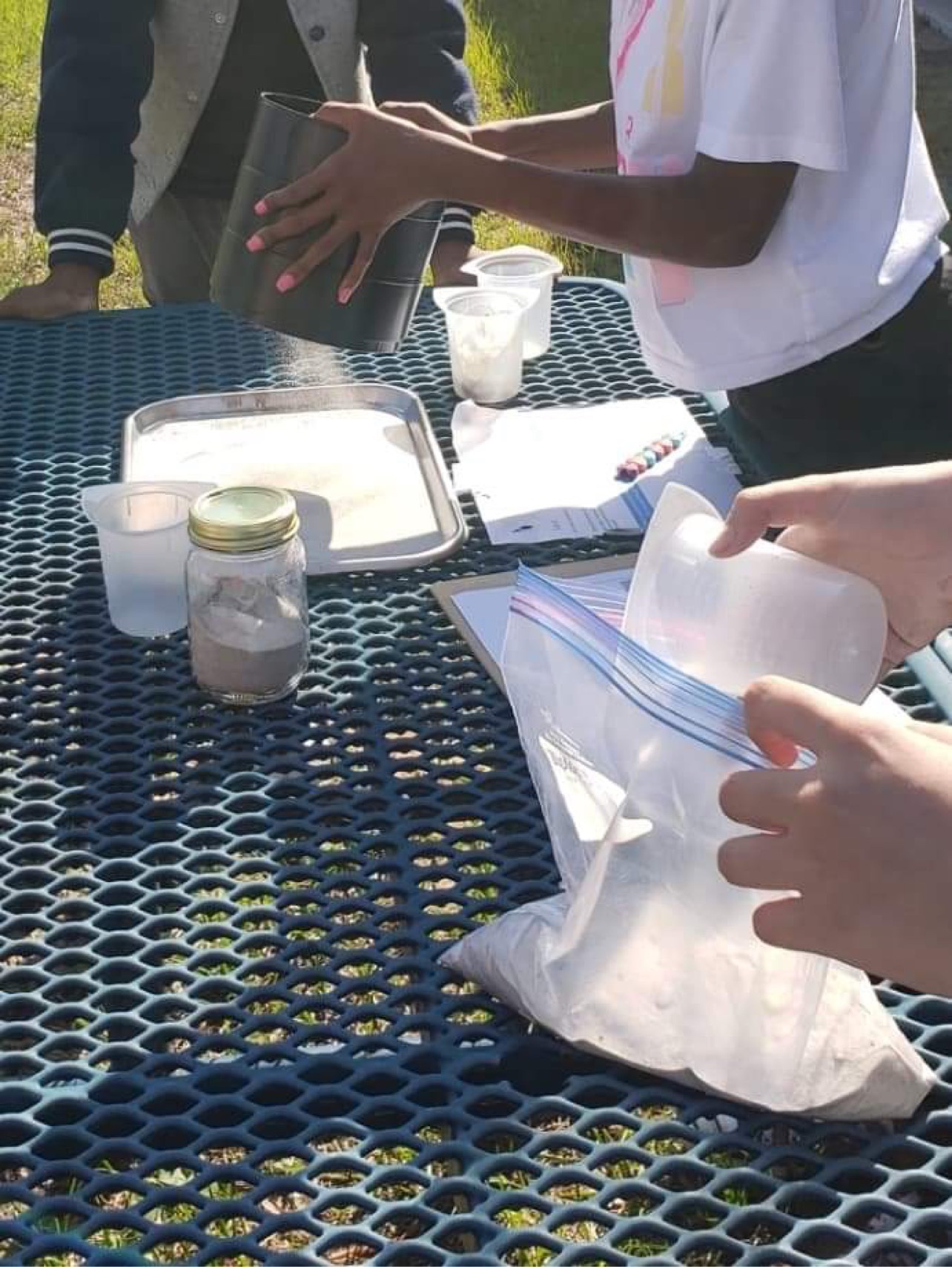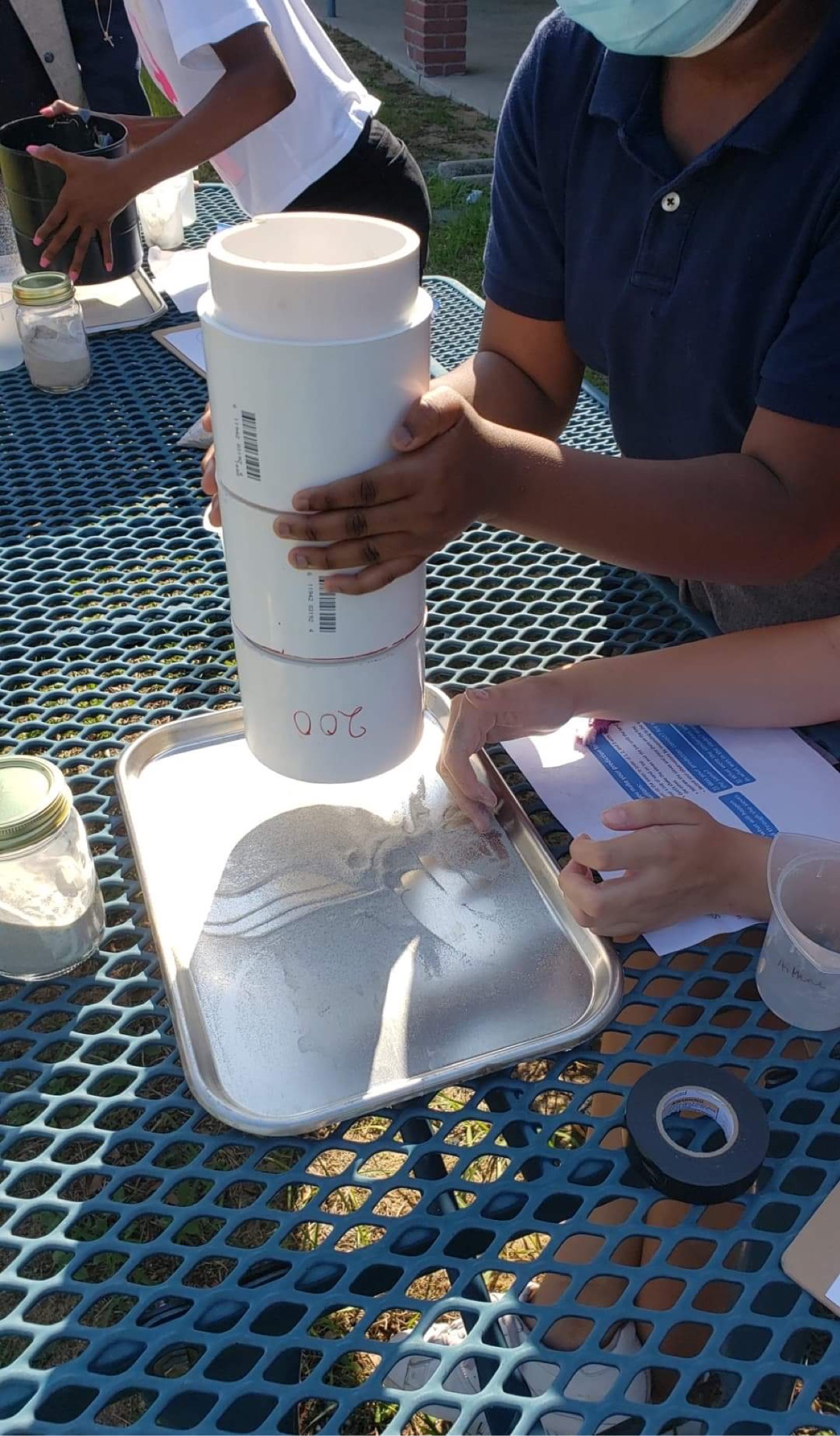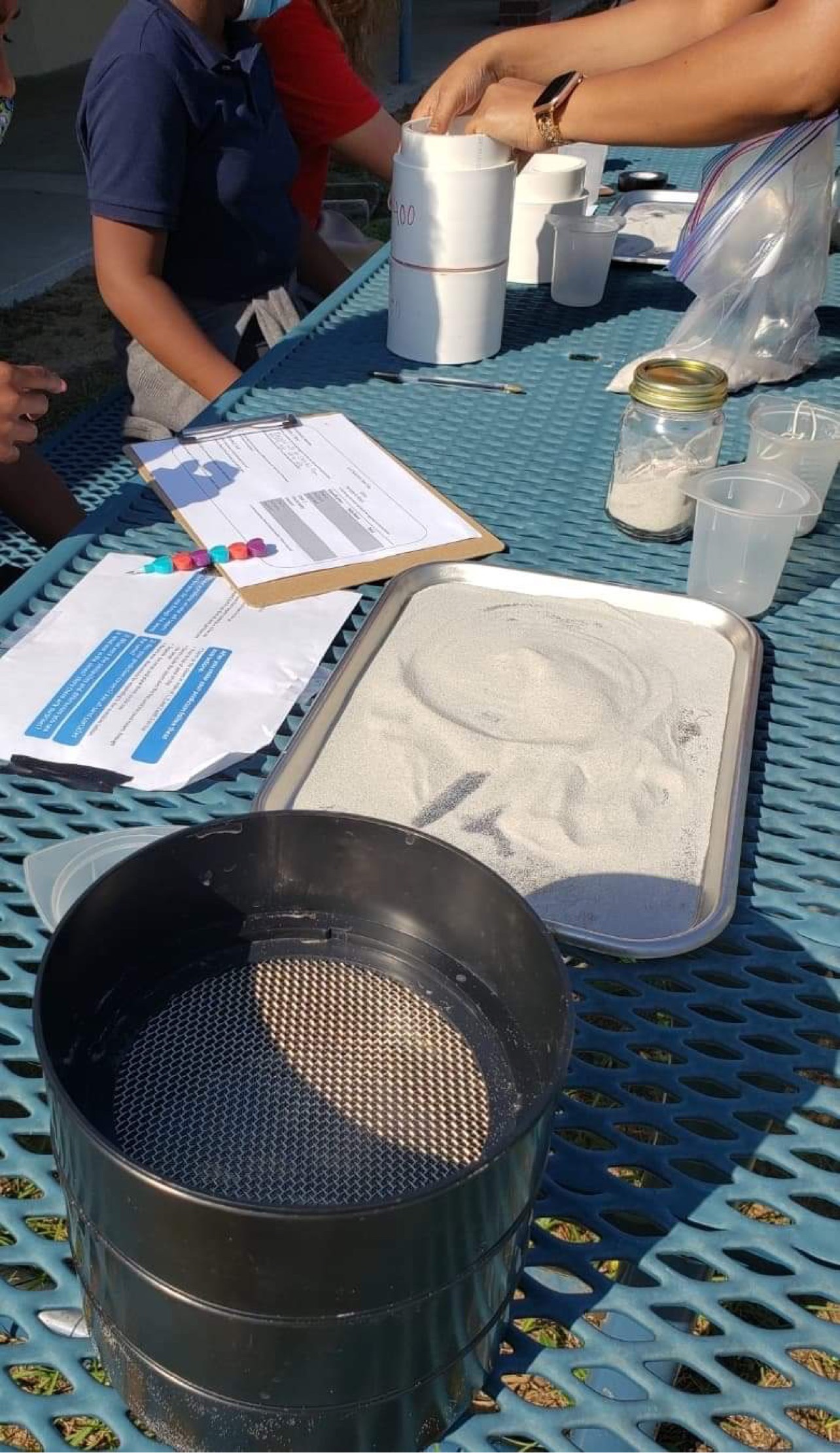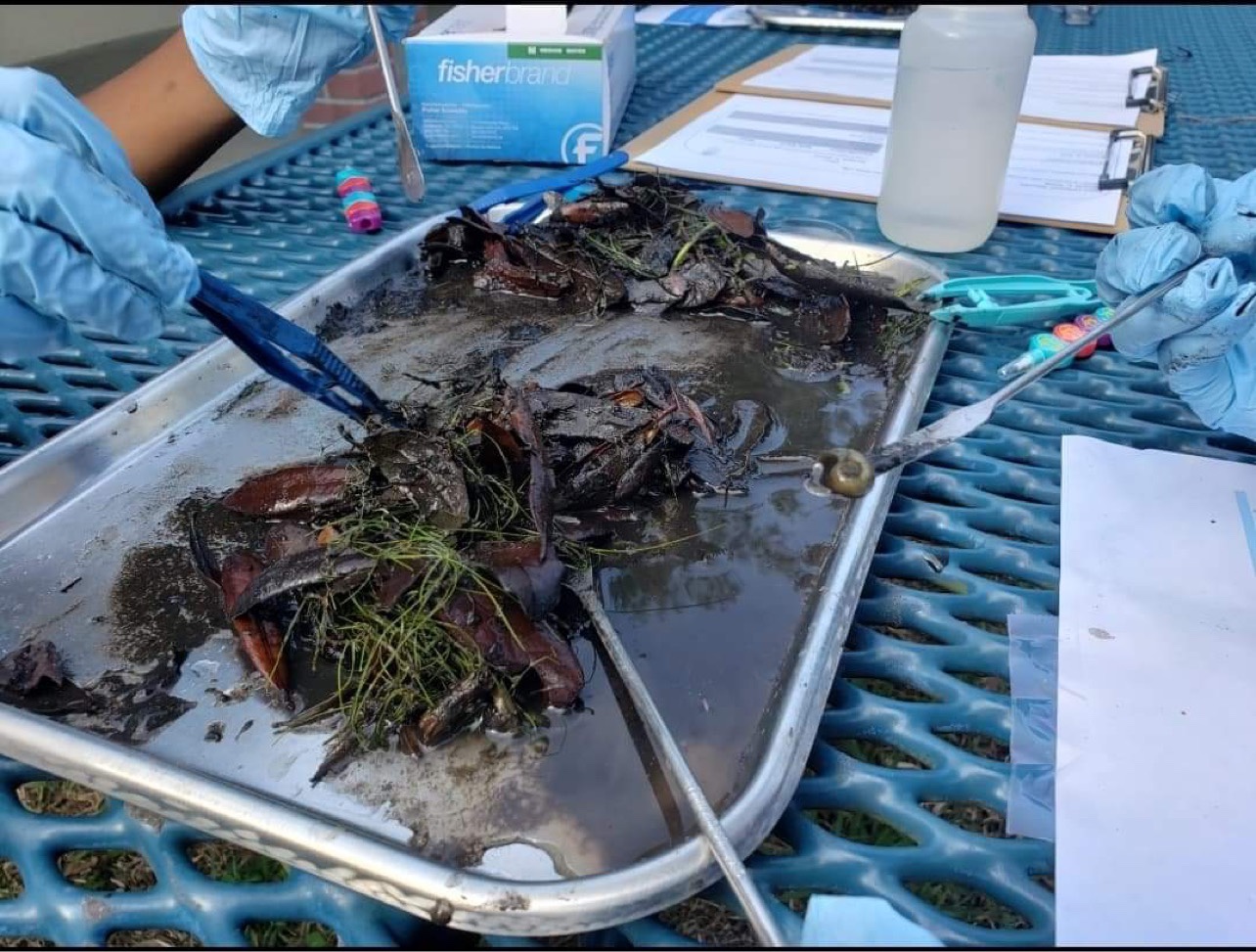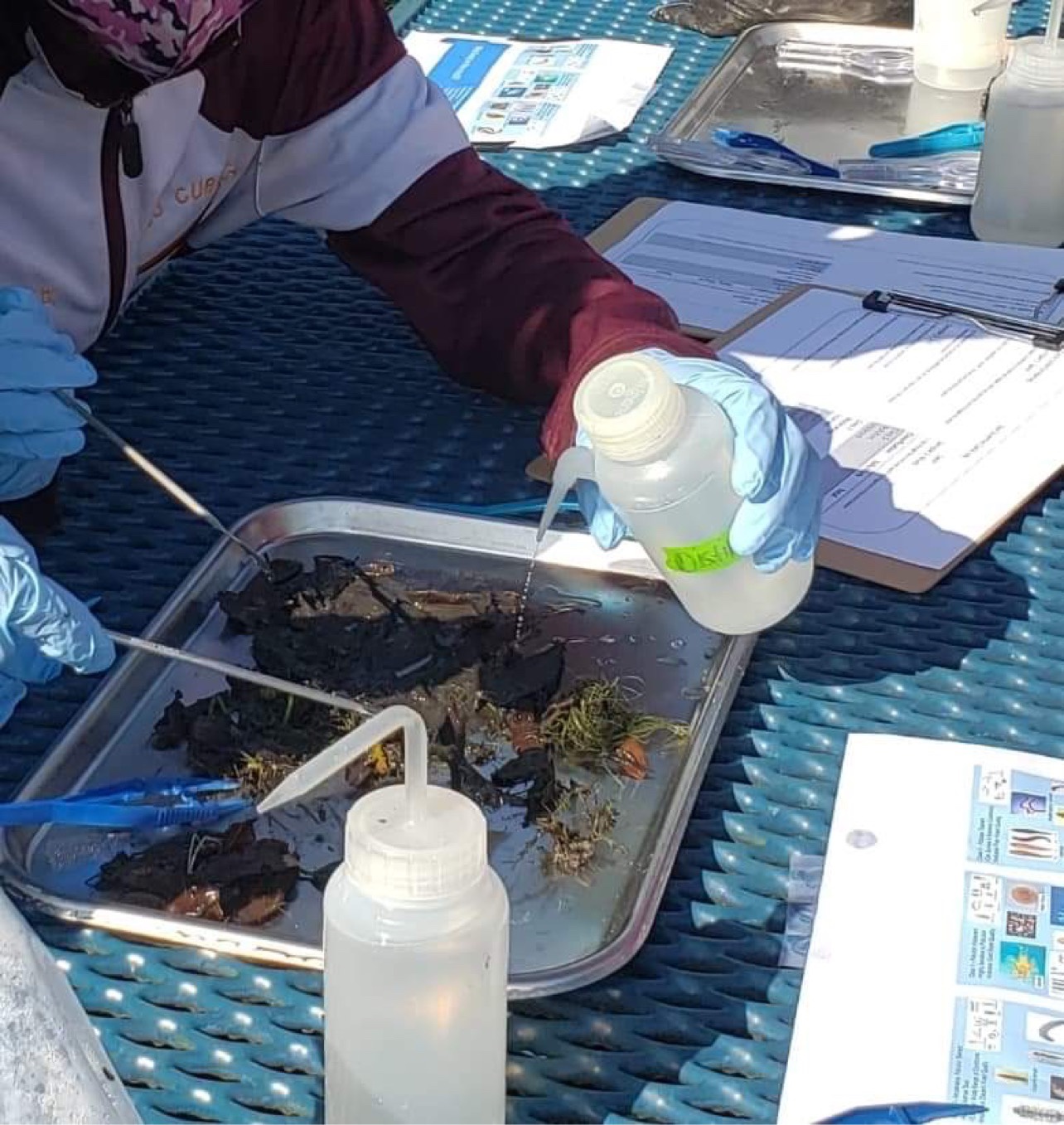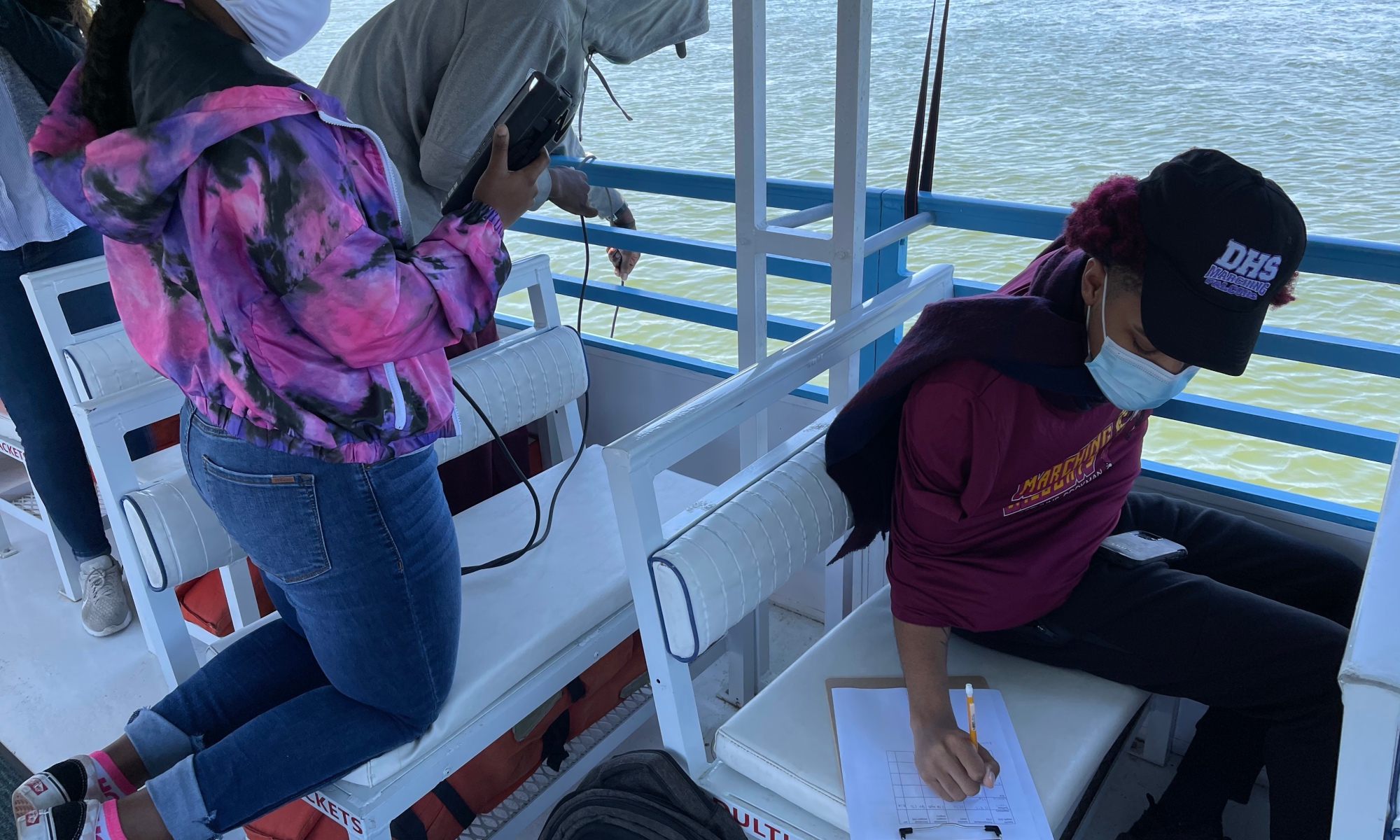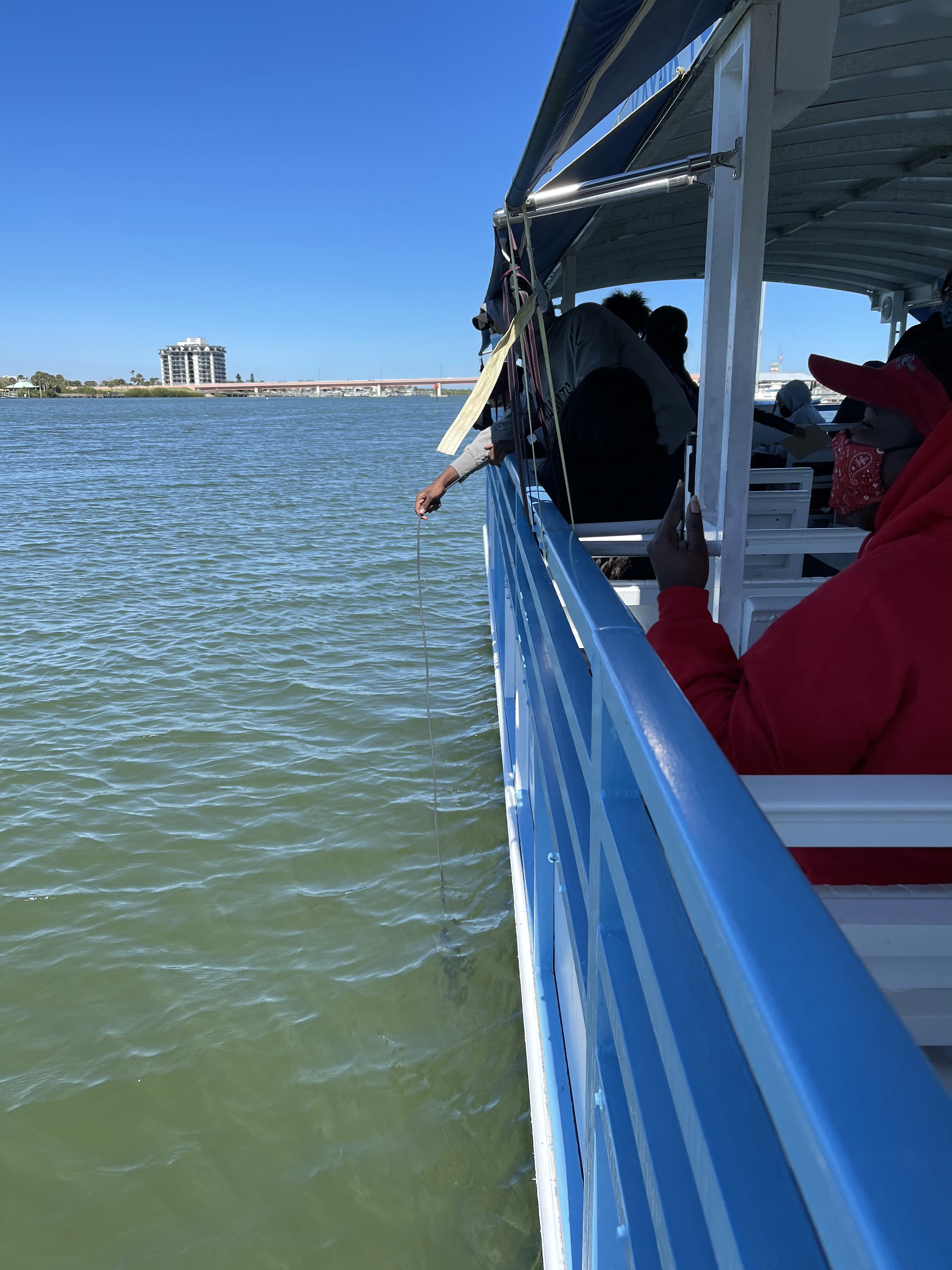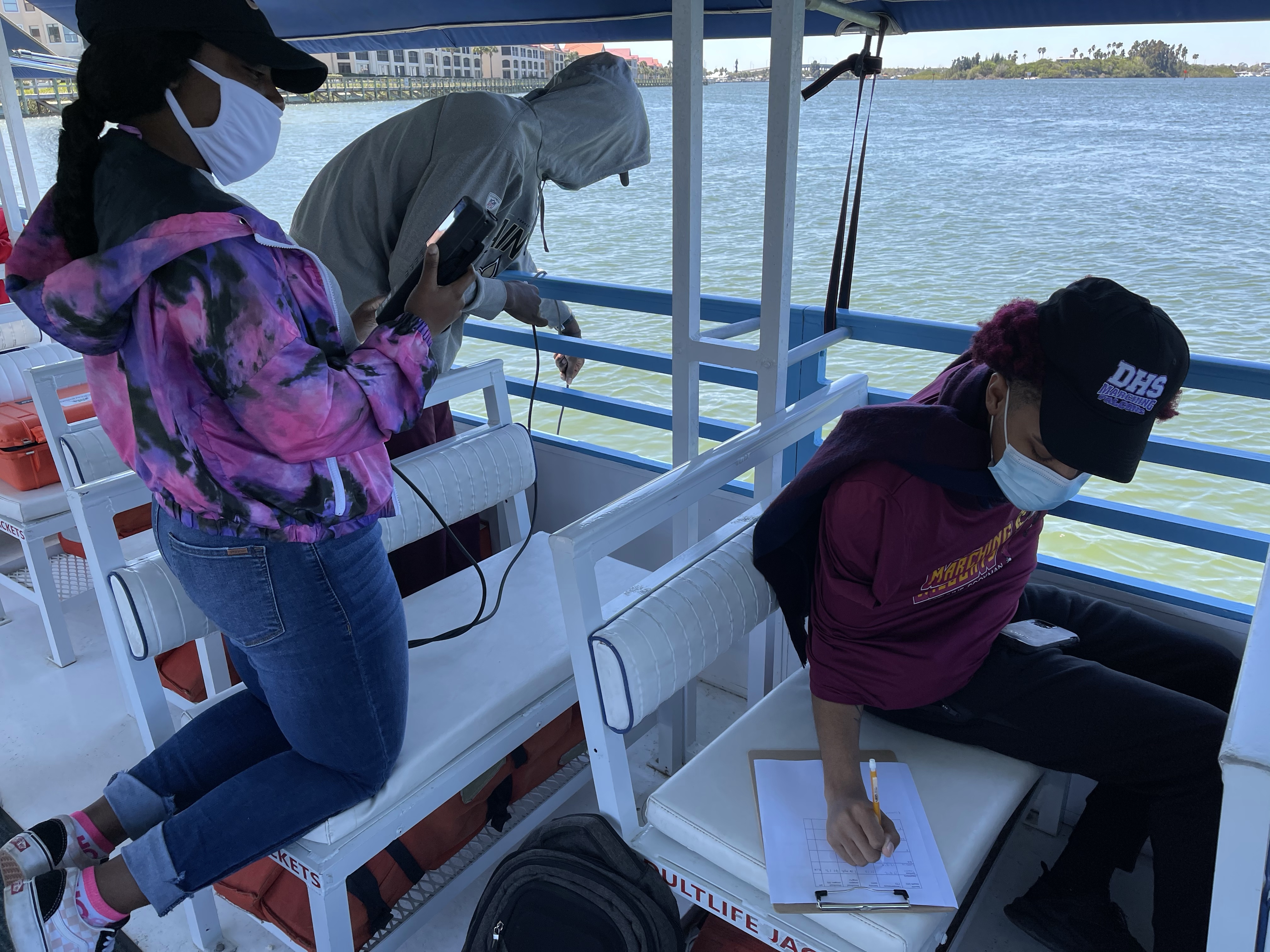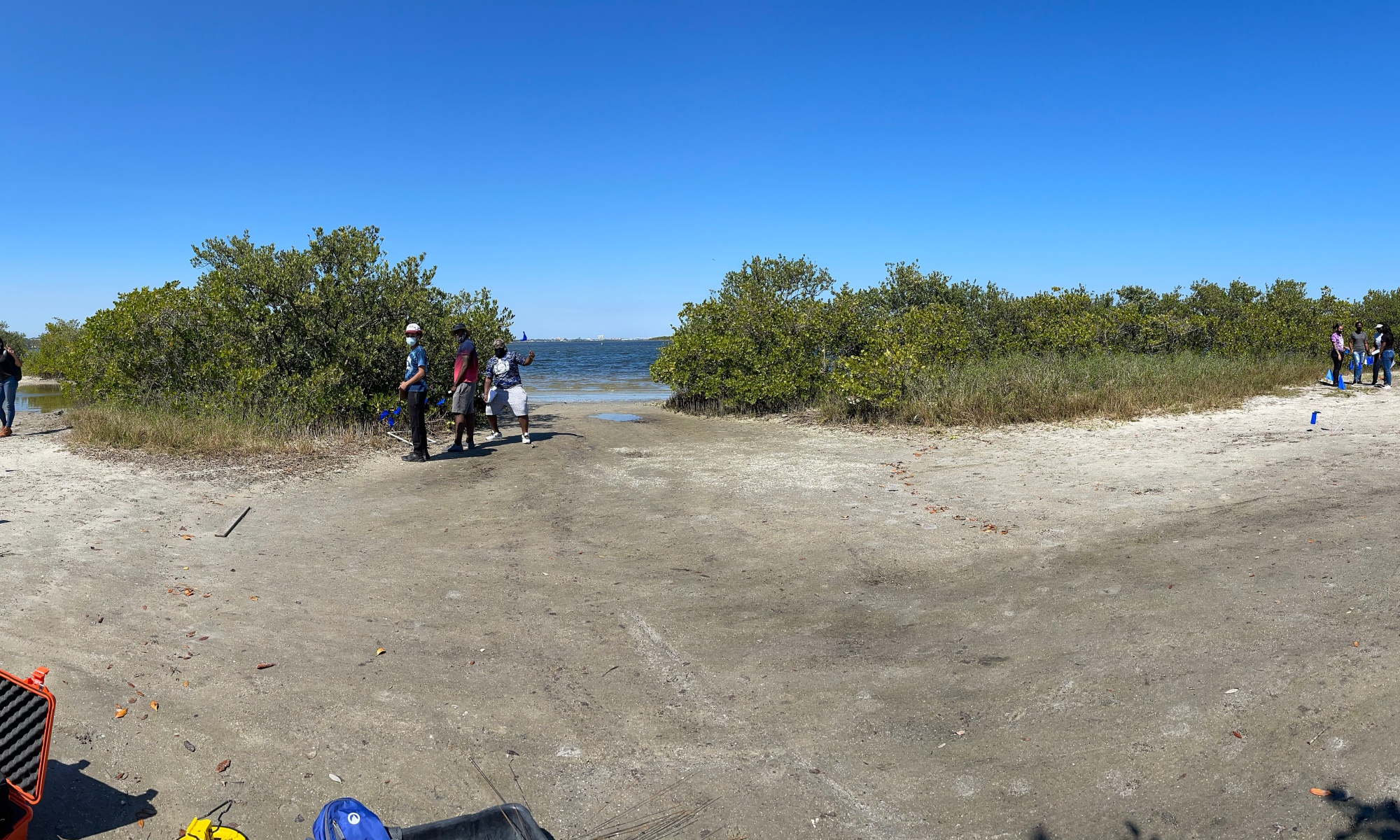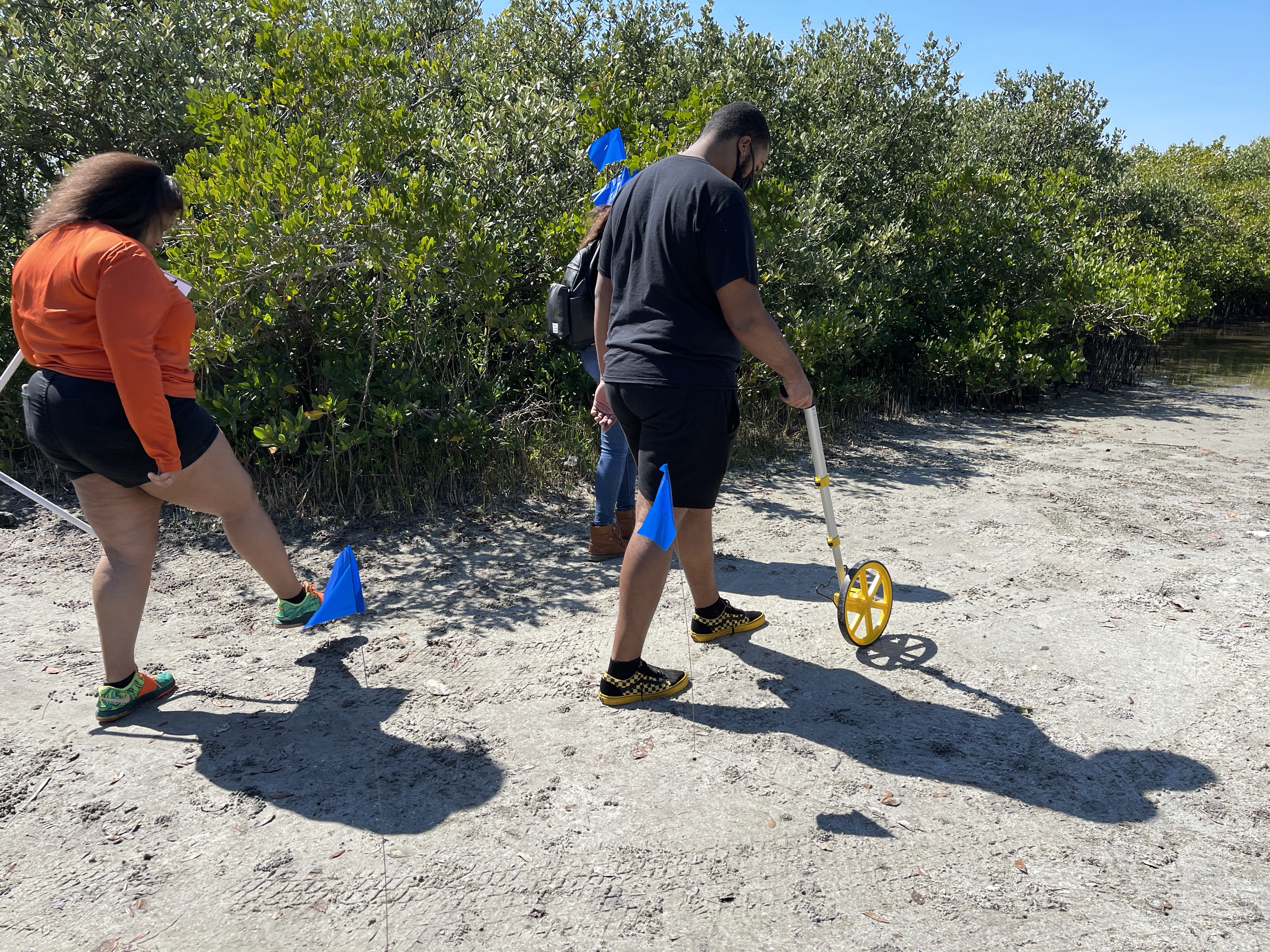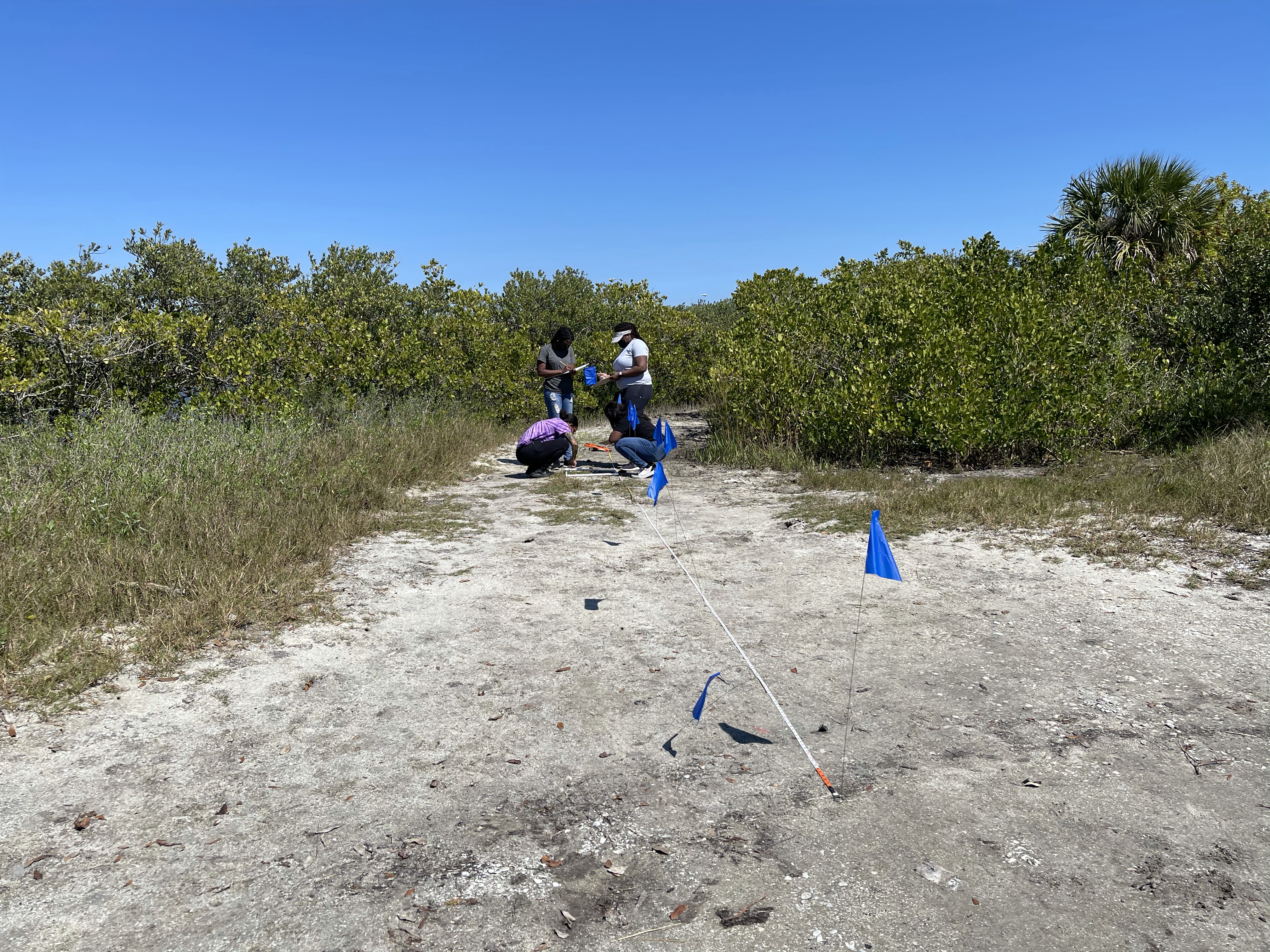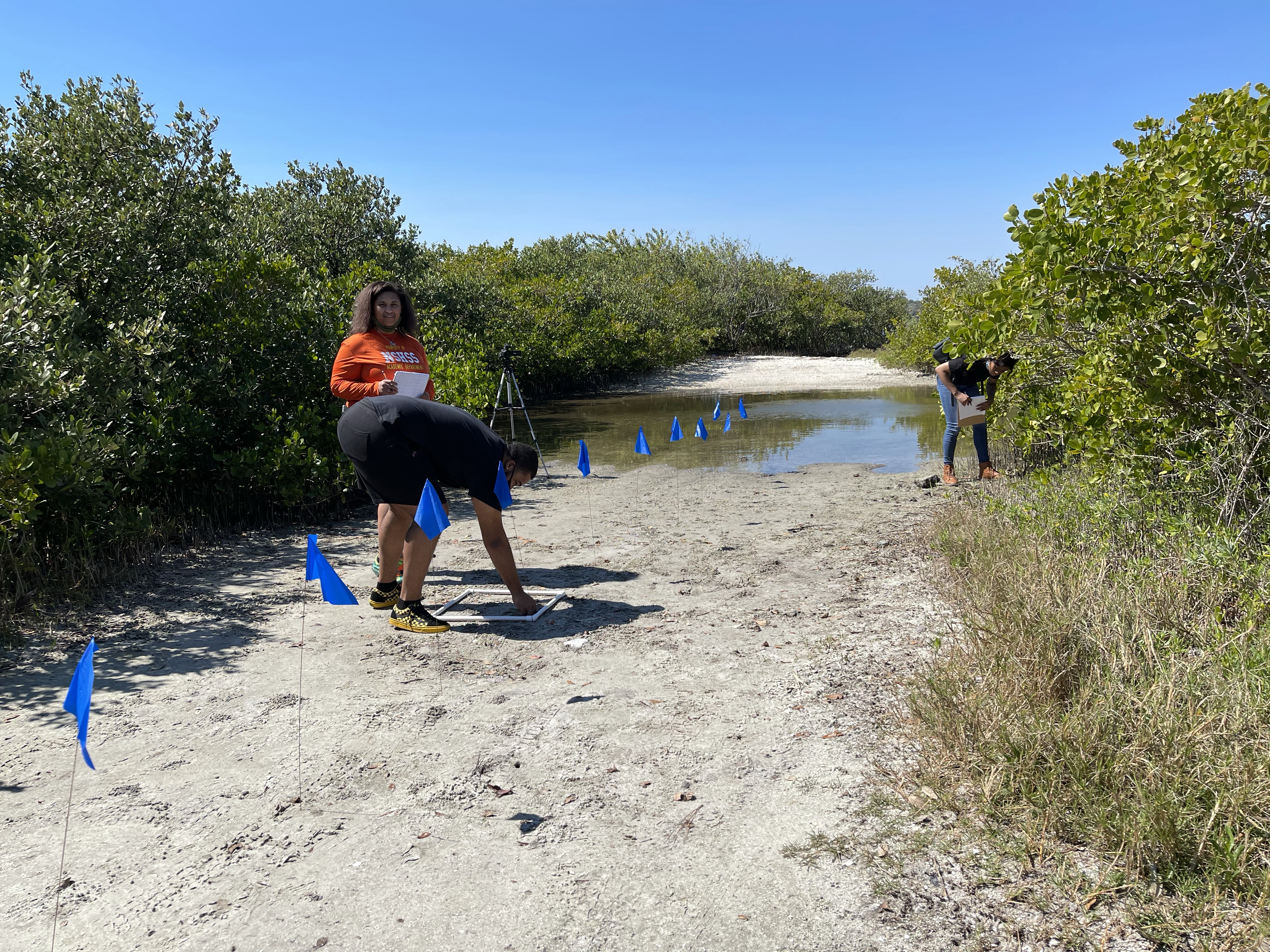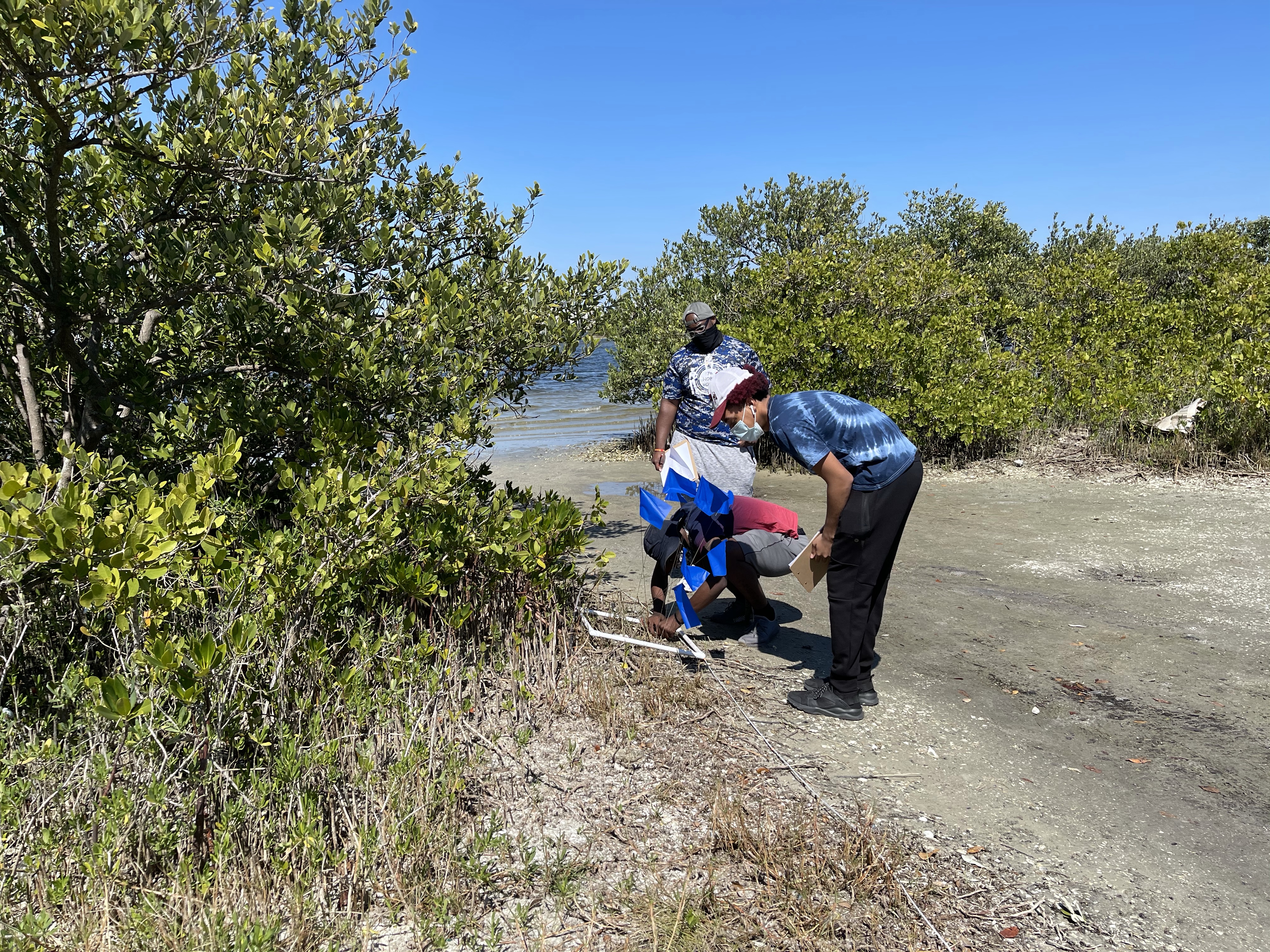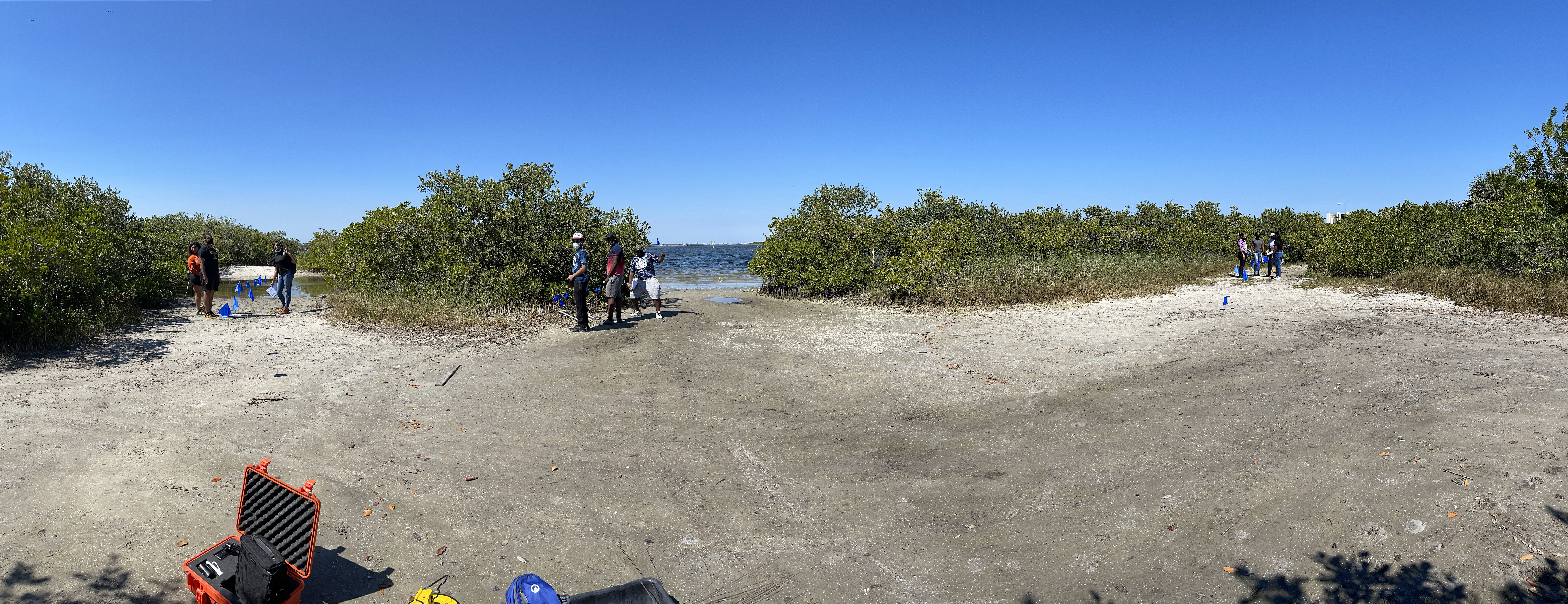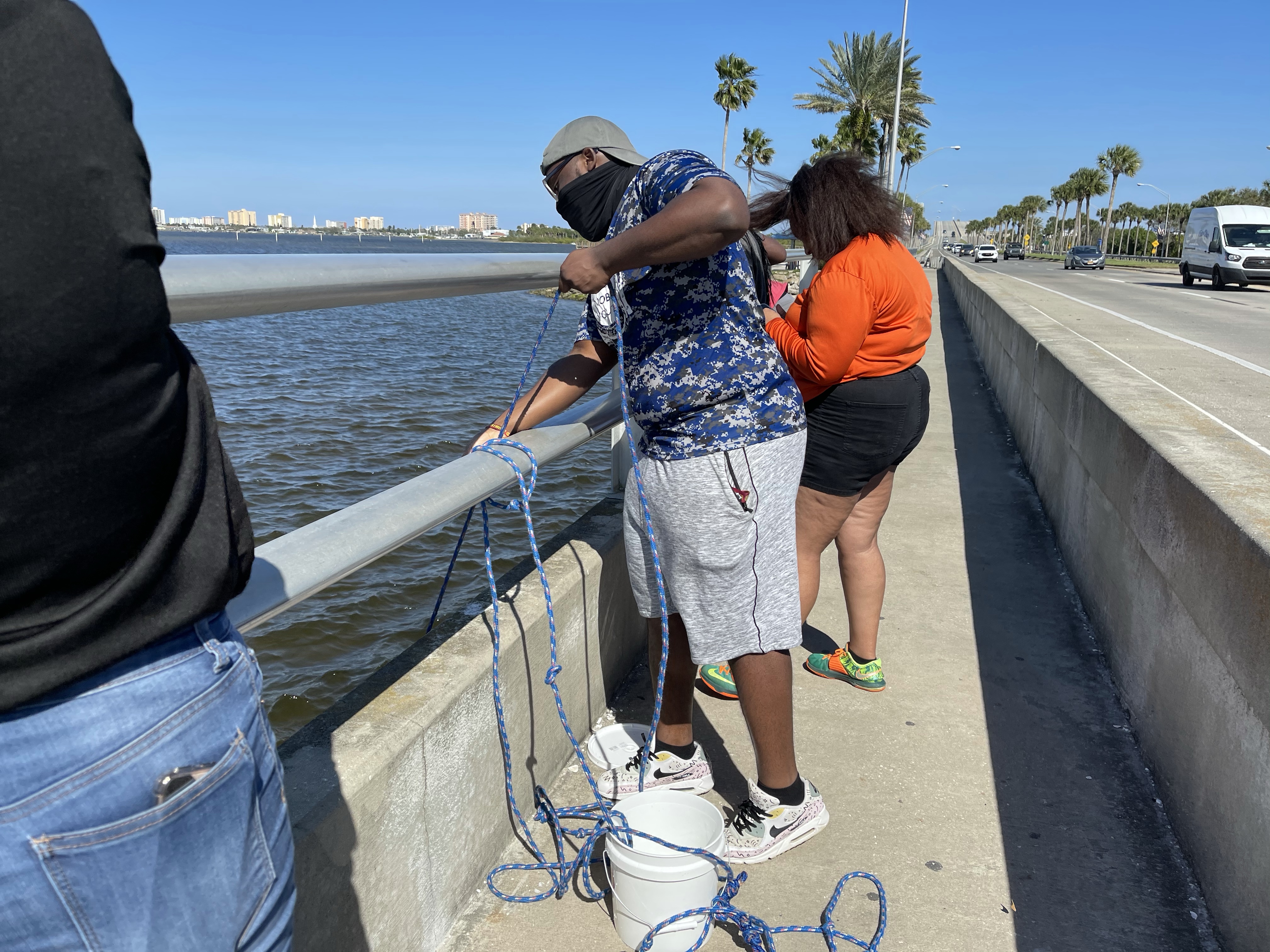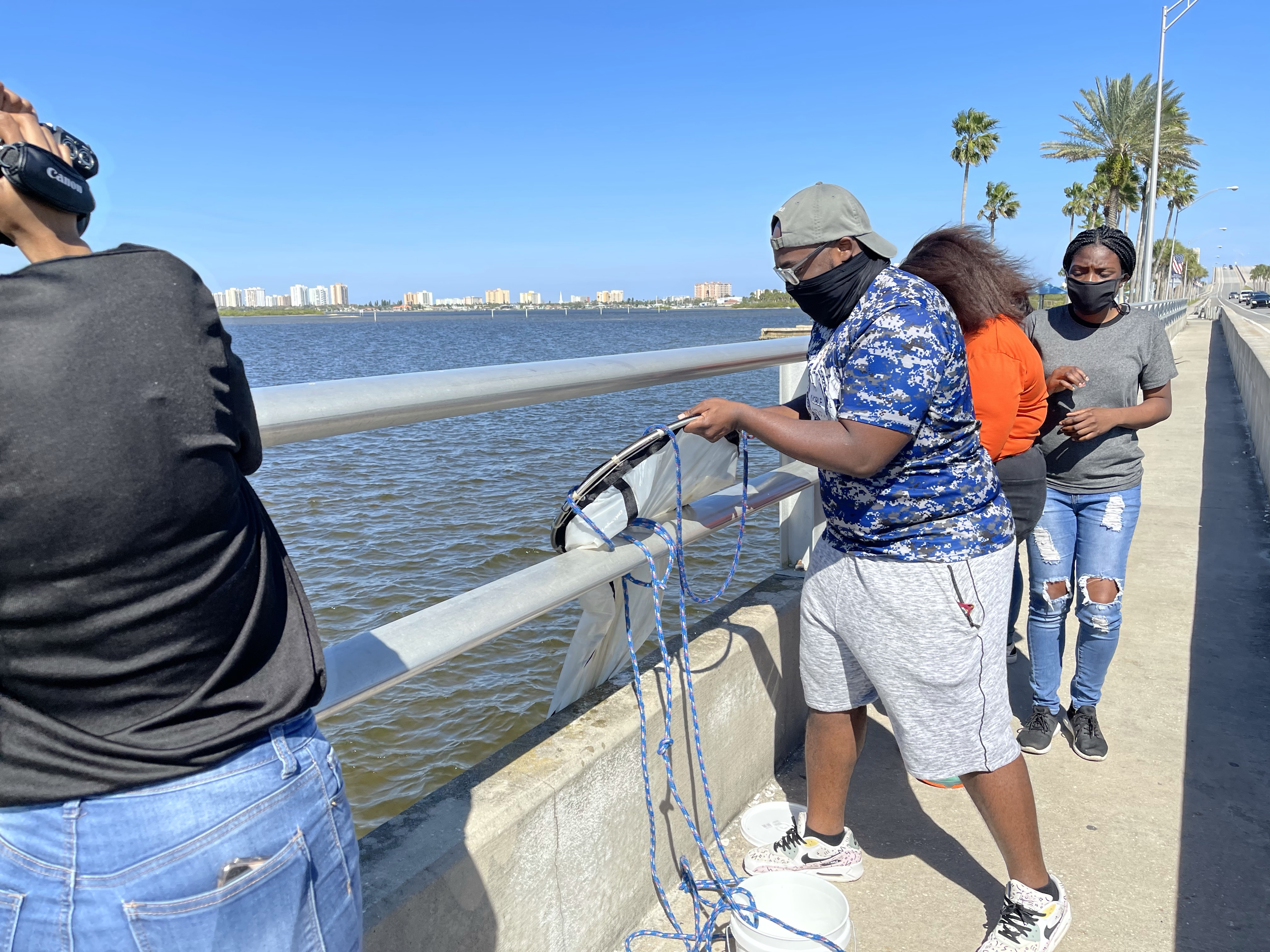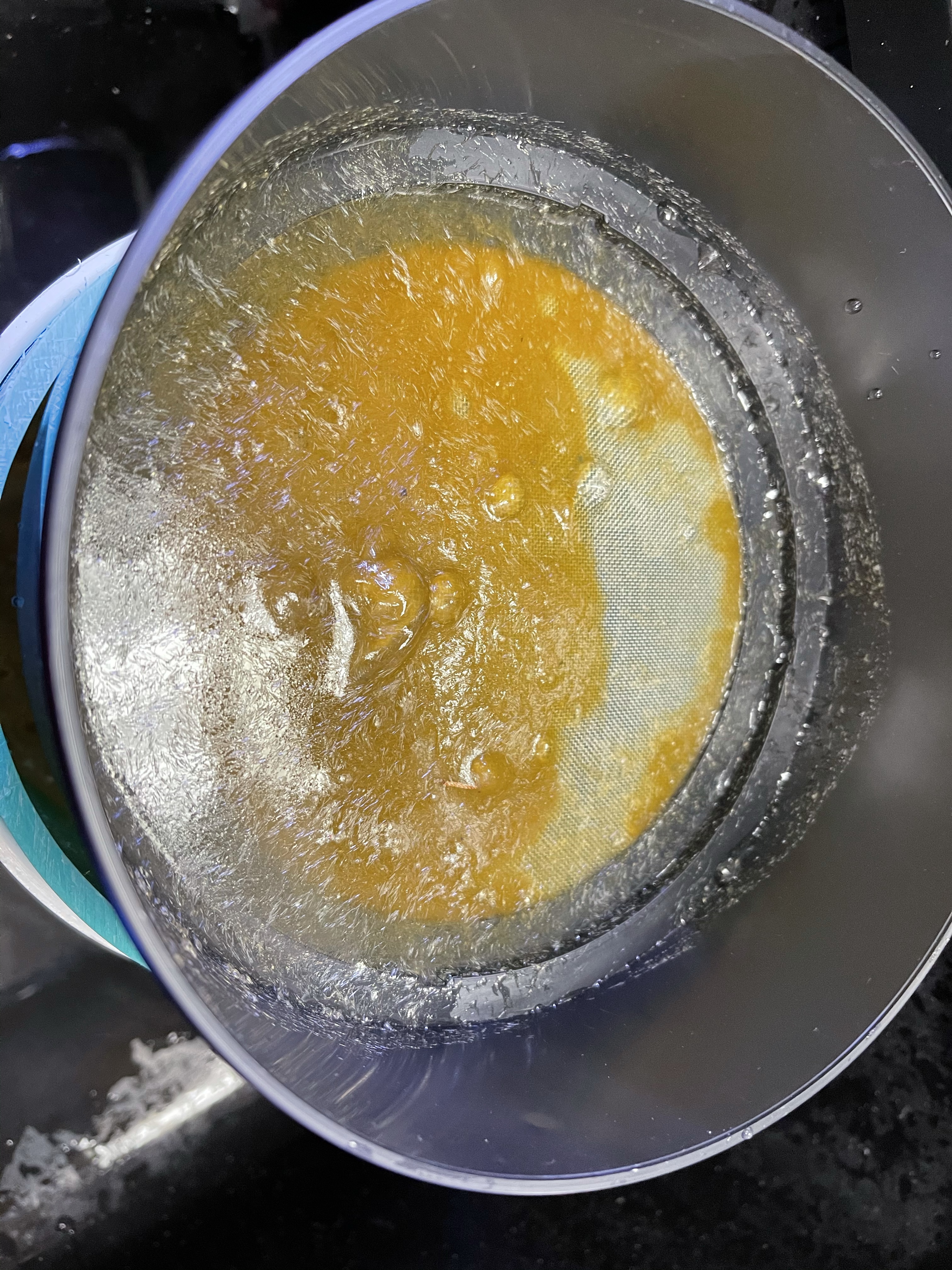Very proud of Ms. Lauren Albury, Senior Integrated environmental science major at Bethune-Cookman University presenting her research at the POSea2021 virtual conference today! Her research blended field work, lots of microscope work, and working with professional agencies like the Florida Department of Environmental Aquatic Preserves Office and Florida Fish and Wildlife Conservation Commission
Flipped Classroom- Mating Game
As part of BI 337- General Ecology, I’m trying out a flipped classroom this semester. One “benefit” of COVID-19 and virtual/hybrid instruction, was the development of pre-recorded lectures which can support integration of flipped classroom techniques this semester now that we have returned to face to face instruction.
In BI 337, we started off this semester with some outdoor activities exploring populations, distribution, biotic/abiotic variables, and unitary/modular organisms next to the beautiful pond on campus.
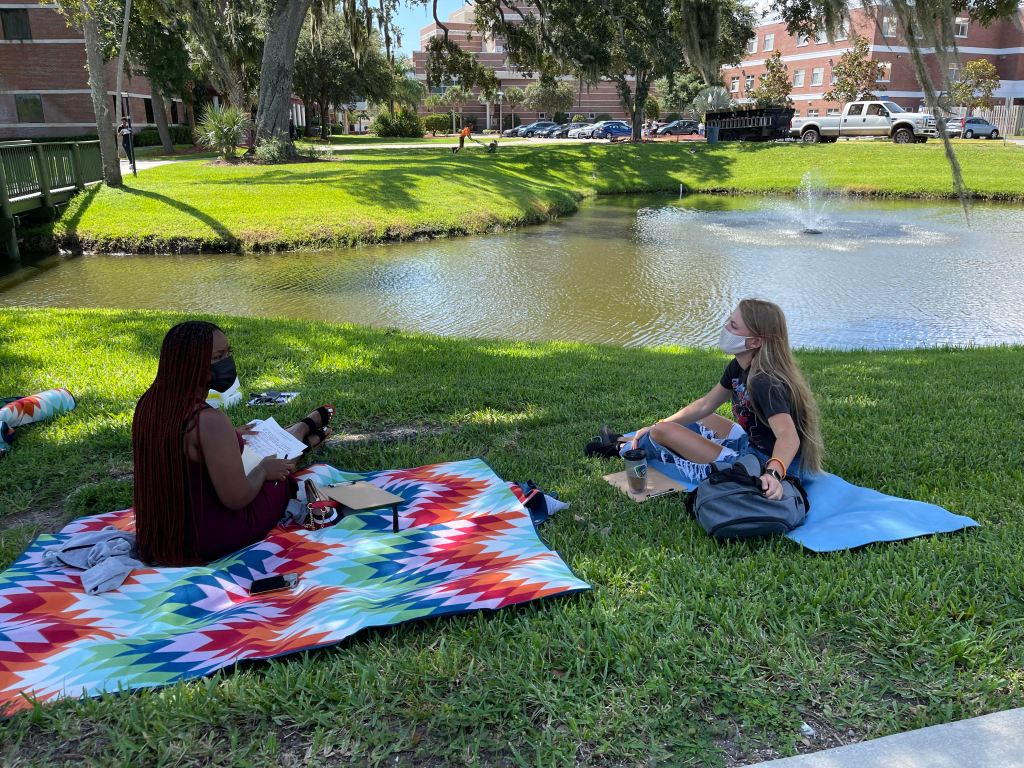
We followed up the next class period back out by the pond to examine quadrats and mark recapture estimates of population size. The next week we headed back into the computer lab to work with data on calculating population size and identifying relationships between body size and reproductive output for understanding resources allocation (resources and summaries available by request).
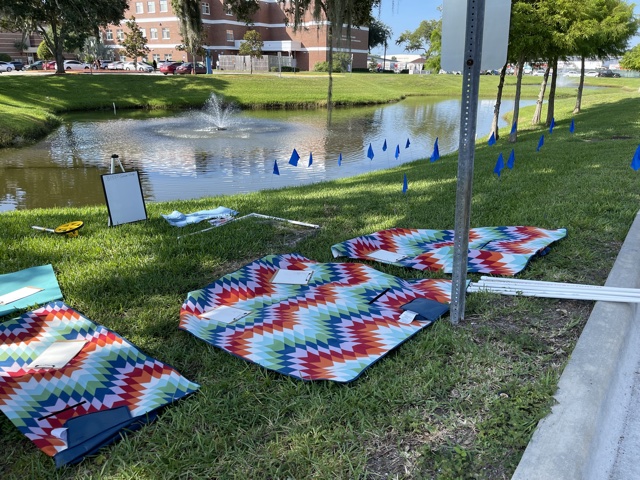
For the mating systems chapter, I located “The Mating Game: A Classroom
Activity for Undergraduates That Explores the Evolutionary Basis of Sex Roles” by Moore et., al, 2012 from the American Biology Teacher. (https://online.ucpress.edu/abt/article/74/9/648/92552/The-Mating-Game-A-Classroom-Activity-for)
The description of the game and the supplementary resources they provide on Google Sites (https://sites.google.com/site/theclassroommatinggame) made this game a very easy project to take on during a 50 minute lecture period. I supplemented the resources they provided with a YouTube video on Mating Systems as a pre-assignment and some reflection questions on Canvas.
Here is a video of experience using the mating game in class:
FSA prep outreach at Turie T. Small Elementary School
Dr. Connie Mitchell, educator, founder of Rivers Edge STREAM, and B-CU chemistry alumni, has been out at Turie T. Small Elementary School helping students prepare for their Florida Standards Assessments with engaging hands on STEM activities.

Dr. Mitchell reached out to our lab to help discuss science concepts for 5th graders. Dr. Krejci (IES and Natural Science), Shawana Brooks (Center for Trans-disciplinary Data Analytics), and Cameron Eskew (IES undergrad) set up and instructed three stations examining sand, soil and mud.
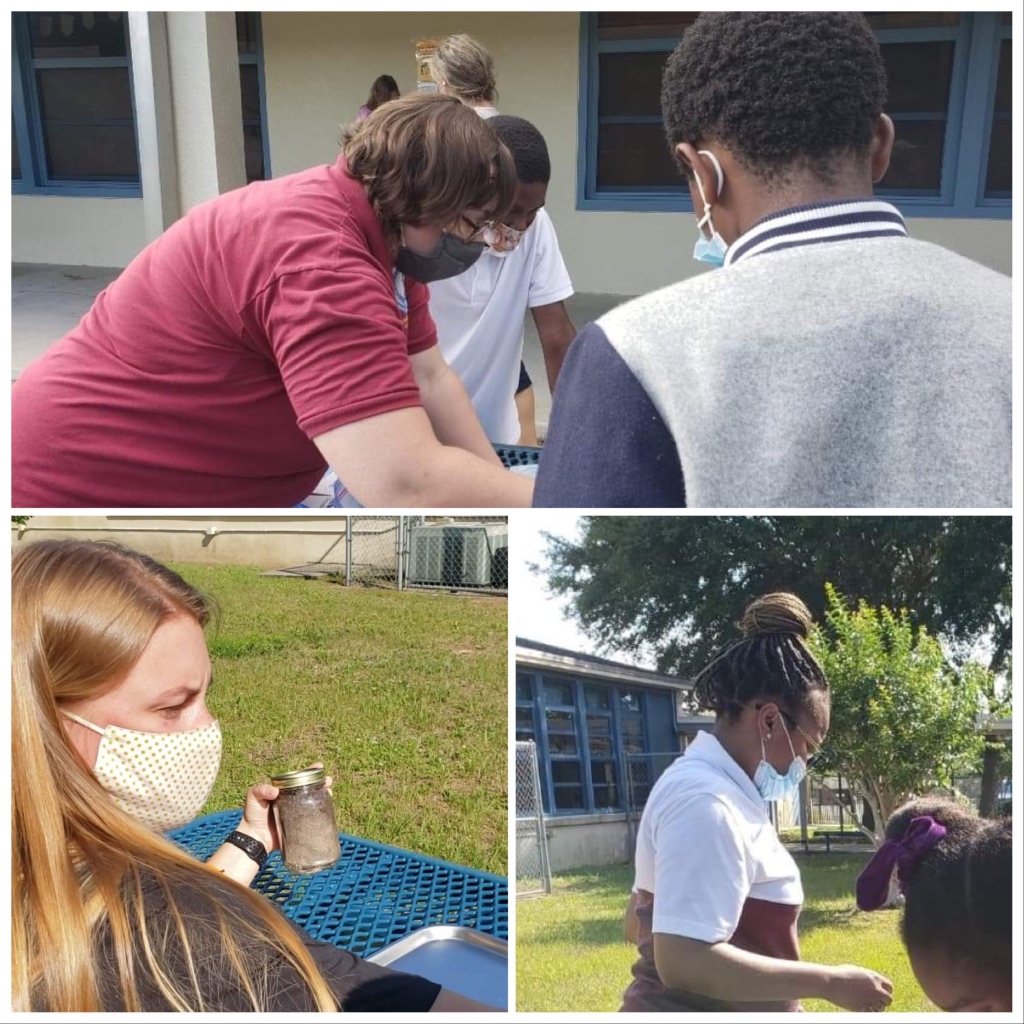
Sand Station- students examined sand samples from Daytona Beach by looking at sediment grain size and uncovering the biological and human impacts of on our local beaches.
Soil Station- students examined soil horizons and hypothesized on what biological and physical processes occur to create these different layers.
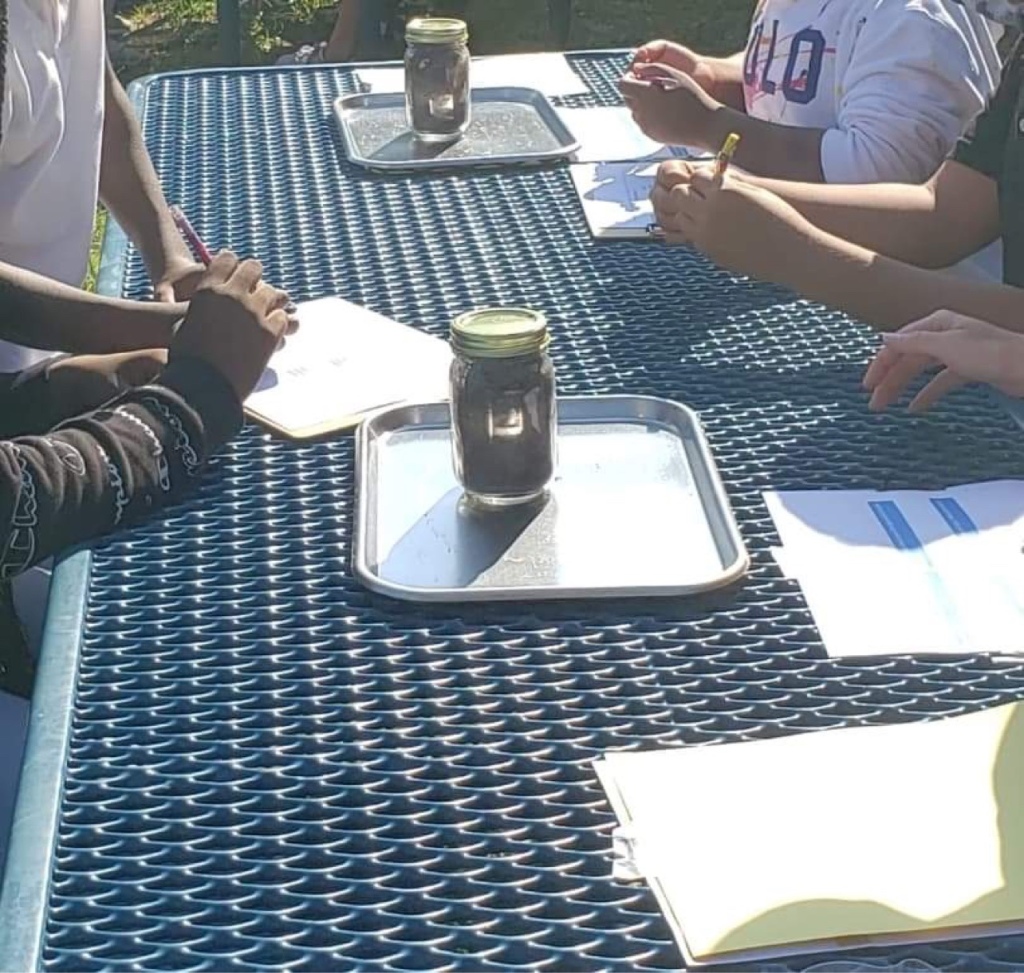
Mud Station, “aka the fun station”- students learned about biological indicators of water quality by examining macro invertebrates from a pond. Students got to dig around in the muck looking for snails, worms and bugs. We even spotted a spring peeper tadpole and a fish!
Along the way, students filled out their data sheets and answered questions on the sediment samples.
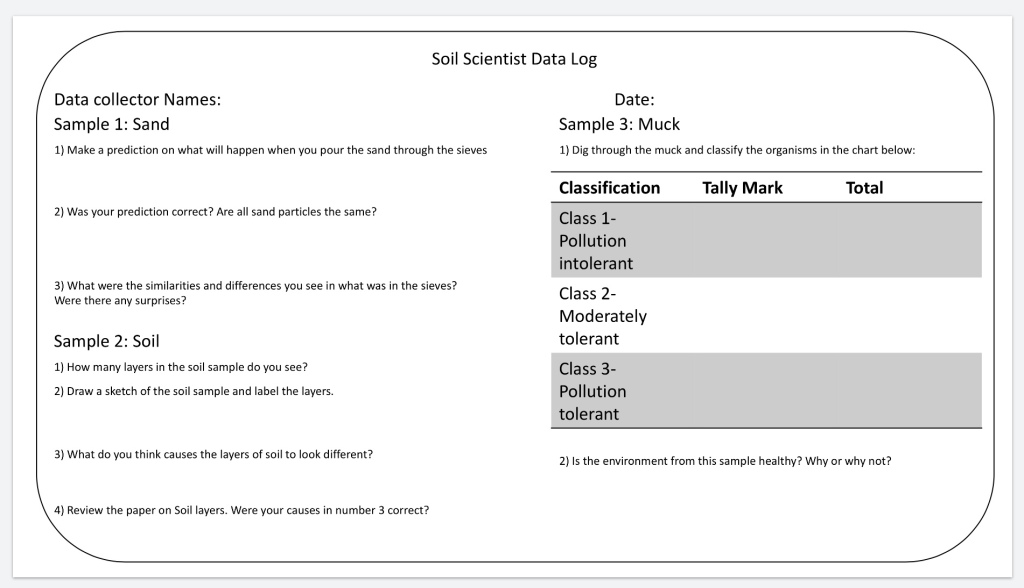
It was a great way for B-CU to contribute to our local schools and support our teachers! We look forward to the next opportunity to bring our research to these budding scientists 🔬🦠🧪
Our labs include Boats, technology, and Dolphins!
Today the BI213 Research Methods course spent the afternoon on a pontoon boat with the Marine Discovery Center to learn about field data collection.
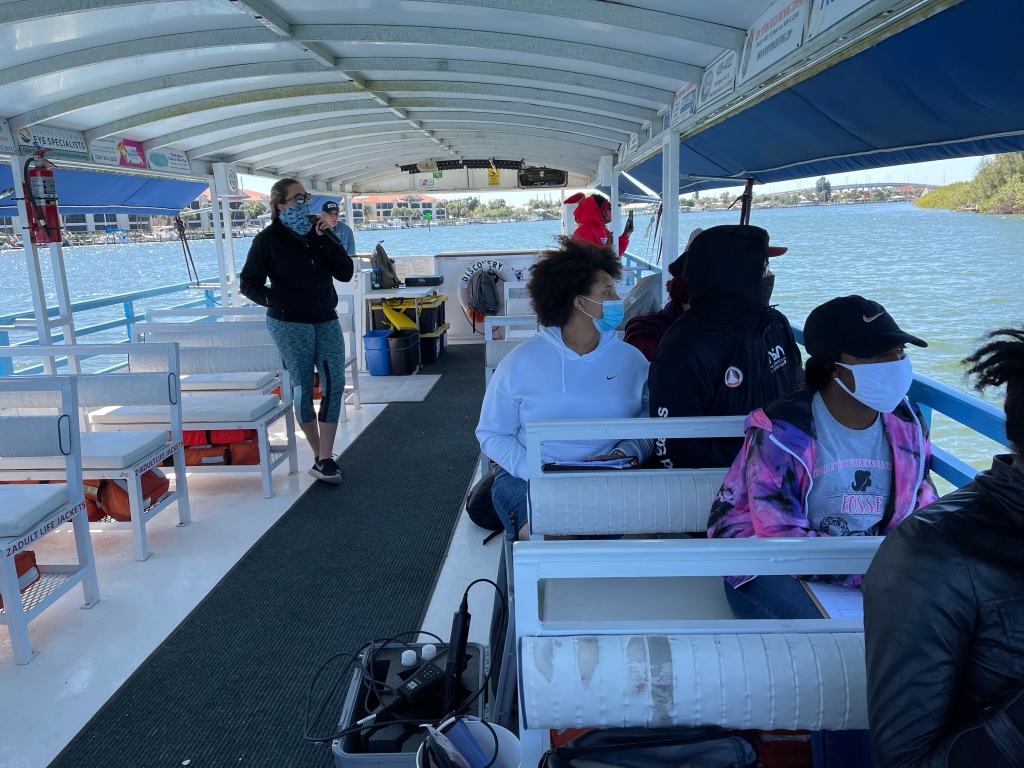
Students utilized a secchi disk and YSI probe to check the water clarity, temperature, salinity, pH, and dissolved oxygen from the surface to depth at three locations in the Mosquito Lagoon.
They learned about how each measurement changes with tides, seasons and environmental stress events, like algae blooms, and the ecological significance of specific values.
The experience taught the students about managing data collection in the field, how to deploy gear from a boat and effective communication between the data collectors and recorders.
In addition to learning about data collection, the students were able to experience bottlenose dolphins, cannonball jellyfish and a bird rookery while taking in the scenes around them.
This experience is one of the many ways Bethune-Cookman introduces our Biology majors to science concepts outside of the classroom.
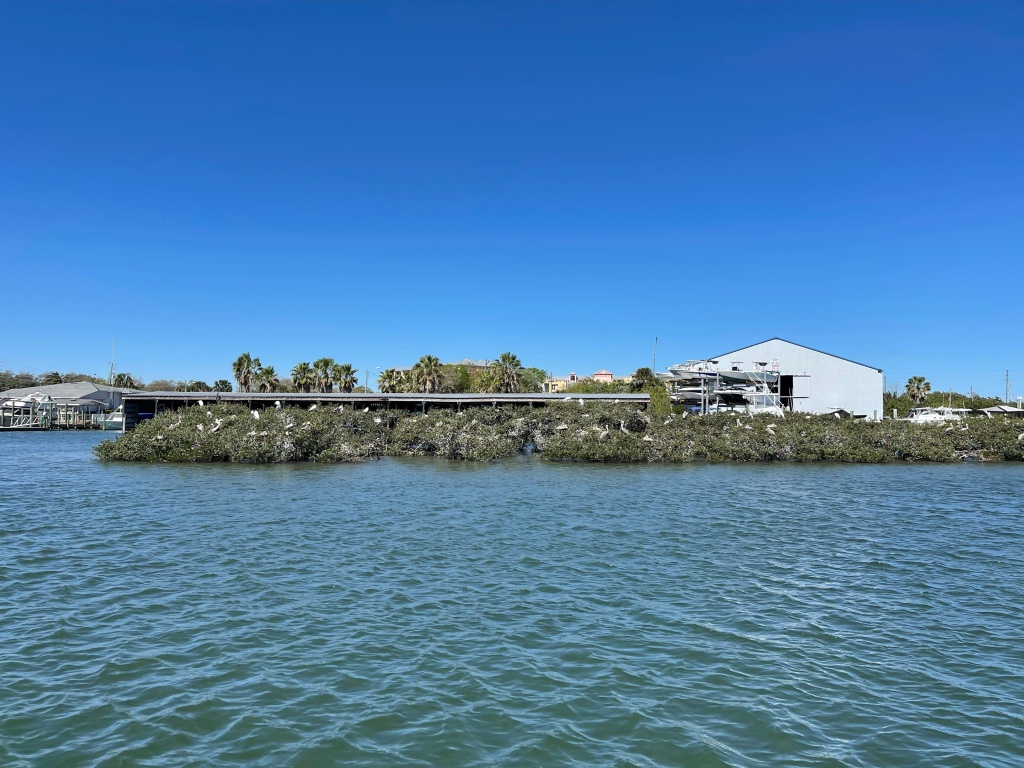
Research Methods Field Day
A fantastic day in Research Methods for our first face-to-face lab in spring 2021! It was funny to physically meet each other and put names to faces, for them and me.
We went to dunlawton causeway where there is a great mud flat filled with fiddler crabs. The students learned to run a transect line and measure fiddler crab density with a quadrat.
They will use the data to create frequency diagrams and they will run t-tests to compare density and burrow size between two transects.
Most of the class stayed late to help me with an optional zooplankton tow, to watch the dolphins, and then we sat in the parking lot talking about what graduate school is like.
I think all of us were craving face to face time after so much virtual school!! Next week we get to go out on a pontoon and do water quality sampling!
Celebrating Women in Science Day
We have the pleasure of working with some amazing women at Bethune-Cookman! From faculty, staff and our students, there’s a tremendous amount of support in training our students.
In the Aquatic Research Lab we’ve had many female researchers working in the field, lab and class! The video below just captures a small piece of our women dominated STEM research.
Christmas Break maintenance
I created a short video of what the morning chores of lab involve to keep our fish happy and healthy!
New Publication: Visual Literacy Intervention for Improving Undergraduate Student Critical Thinking of Global Sustainability Issues
I’m excited to announce our new publication in Sustainability!
Abstract: The promotion of global sustainability within environmental science courses requires a paradigm switch from knowledge-based teaching to teaching that stimulates higher-order cognitive skills. Non-major undergraduate science courses, such as environmental science, promote critical thinking in students in order to improve the uptake of scientific information and develop the rational decision making used to make more informed decisions. Science, engineering, technology and mathematics (STEM) courses rely extensively on visuals in lectures, readings and homework to improve knowledge. However, undergraduate students do not automatically acquire visual literacy and a lack of intervention from instructors could be limiting academic success. In this study, a visual literacy intervention was developed and tested in the face-to-face (FTF) and online sections of an undergraduate non-major Introduction to Environmental Science course. The intervention was designed to test and improve visual literacy at three levels: (1) elementary—identifying values; (2) intermediate—identifying trends; and (3) advanced—using the data to make projections or conclusions. Students demonstrated a significant difference in their ability to answer elementary and advanced visual literacy questions in both course sections in the pre-test and post-test. Students in the face-to-face course had significantly higher exam scores and higher median assessment scores compared to sections without a visual literacy intervention. The online section did not show significant improvements in visual literacy or academic success due to a lack of reinforcement of visual literacy following the initial intervention. The visual literacy intervention shows promising results in improving student academic success and should be considered for implementation in other general education STEM courses.
You can read the full article online: https://www.mdpi.com/916184 or download the article PDF from below:
Lab updates: New Lined Seahorse juveniles
Now that we are on winter break, we will be working on setting up our new microscopes and Orion Versa Star benches meter. Hopefully the students will take this time to work on data collection in preparation for Spring research conferences!
One of our new lab additions was a birth of Lined Seahorses, Hippocampus erectus, from the Marine Discovery Center in New Smyrna Beach. They have both Lined and Dwarf seahorses on display. Their new male gave birth on Monday and our students will be learning how to rear these juveniles.
Lined seahorse juvenile are pelagic for around 7-10 days after birth and require slightly different care than the dwarfs. Dwarf juveniles immediately attach to vegetation after their born, are less work to raise, and have higher survival. Both species eat the same food from birth but Lined seahorses are trained to eat frozen mysid shrimp after a few months. Adult Dwarfs will continue eating live brine shrimp (Artemia).
Here’s a video from the lab today:
Congratulations Jennifer!
Jennifer Spain has successfully defended her MS Thesis “COMPARING RECRUITMENT PATTERNS BETWEEN OYSTER BAGS AND OYSTER CORE MODULES”. Jennifer is the Aquatic Research Labs first graduate student and we are proud of her accomplishments and hard work. Final revisions and publication submission are up next 🎉
